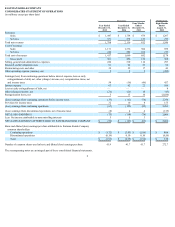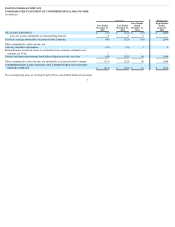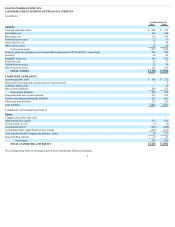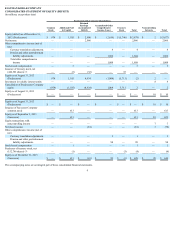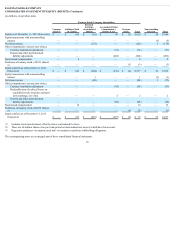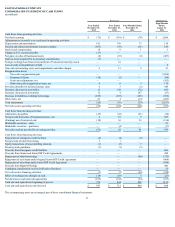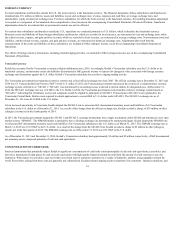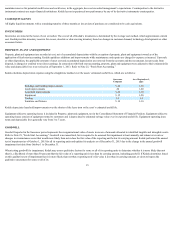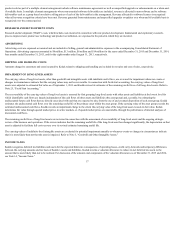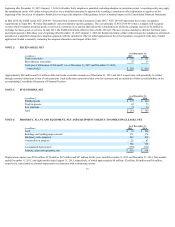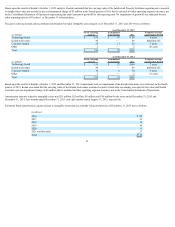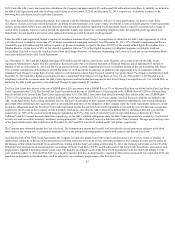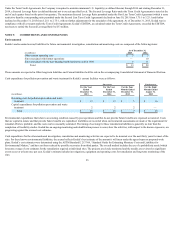Kodak 2015 Annual Report Download - page 17
Download and view the complete annual report
Please find page 17 of the 2015 Kodak annual report below. You can navigate through the pages in the report by either clicking on the pages listed below, or by using the keyword search tool below to find specific information within the annual report.
reporting units, then a two-step goodwill impairment test is performed to test for a potential impairment of goodwill (step 1) and if potential losses are identified, to
measure the impairment loss (step 2). Determining the fair value of a reporting unit involves the use of significant estimates and assumptions. Refer to Note 5,
“Goodwill and Other Intangible Assets”.
WORKERS COMPENSATION
Kodak self insures and participates in high-deductible insurance programs with retention and per occurrence deductible levels for claims related to workers
compensation. The estimated liability for workers compensation is based on actuarially estimated, discounted cost of claims, including claims incurred but not
reported. Historical loss development factors are utilized to project the future development of incurred losses, and the amounts are adjusted based on actual claim
experience, settlements, claim development trends, changes in state regulations and judicial interpretations. Amounts recoverable from insurance companies or
third parties are estimated using historical experience and estimates of future recoveries. Estimated recoveries are not offset against the related accrual.
REVENUE
Kodak’s revenue transactions include sales of products (such as components and consumables for use in Kodak and other manufacturers’ equipment and film based
products); equipment; software; services; integrated solutions; and intellectual property and brand licensing. Kodak recognizes revenue when realized or realizable
and earned, which is when the following criteria are met: (1) persuasive evidence of an arrangement exists; (2) delivery has occurred; (3) the sales price is fixed or
determinable; and (4) collectability is reasonably assured. At the time revenue is recognized, Kodak provides for the estimated costs of customer incentive
programs, warranties and estimated returns and reduces revenue accordingly. For those incentives that require the estimation of sales volumes or redemption rates,
such as for volume rebates, Kodak uses historical experience and internal and customer data to estimate the sales incentive at the time revenue is recognized. Kodak
accrues the estimated cost of post-sale obligations, including basic product warranties, based on historical experience at the time Kodak recognizes revenue.
For product sales, the revenue recognition criteria are generally met when title and risk of loss have transferred from Kodak to the buyer, which may be upon
shipment or upon delivery to the customer site, based on contract terms or legal requirements in certain jurisdictions.
For equipment sales, the recognition criteria are generally met when the equipment is delivered and installed at the customer site. Revenue is recognized for
equipment upon delivery as opposed to upon installation when the equipment has stand-alone value to the customer, and the amount of revenue allocable to the
equipment is not legally contingent upon the completion of the installation. In instances in which the agreement with the customer contains a customer acceptance
clause, revenue is deferred until customer acceptance is obtained, provided the customer acceptance clause is considered to be substantive. For certain agreements,
Kodak does not consider these customer acceptance clauses to be substantive because Kodak can and does replicate the customer acceptance test environment and
performs the agreed upon product testing prior to shipment. In these instances, revenue is recognized upon installation of the equipment.
Revenue from the sale of software licenses is recognized when (1) Kodak enters into a legally binding arrangement with a customer for the license of software;
(2) Kodak delivers the software; (3) customer payment is deemed fixed or determinable and free of contingencies or significant uncertainties; and (4) collection
from the customer is probable. Software maintenance and support revenue is recognized ratably over the term of the related maintenance contract.
Revenue from services includes extended warranty, customer support and maintenance agreements, consulting, business process services, training and education.
Service revenue is recognized over the contractual period or as services are performed. In service arrangements where final acceptance of a system or solution by
the customer is required, revenue is deferred until all acceptance criteria have been met.
The timing and the amount of revenue recognized from the licensing of intellectual property depend upon a variety of factors, including the specific terms of each
agreement and the nature of the deliverables and obligations. Revenue is only recognized after all of the following criteria are met: (1) Kodak enters into a legally
binding arrangement with a licensee of Kodak’s intellectual property, (2) Kodak delivers the technology or intellectual property rights, (3) licensee payment is
deemed fixed or determinable and free of contingencies or significant uncertainties, and (4) collection from the licensee is reasonably assured.
Most of Kodak’s equipment has both software and non-software components that function together to deliver the equipment’s essential functionality and therefore
they are accounted for together as non-software deliverables. Non-essential software sold in connection with Kodak’s equipment sales is accounted for as separate
deliverables or elements. In most cases, these software
16


